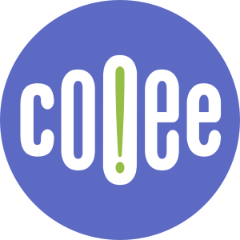I've been getting a lot of queries recently from merchants who want to know about Shopify Online Store 2.0 and whether they should upgrade their Shopify theme to OS 2.0
Basically, the answer is YES! because OS 2.0 is awesome, and adds superpowers to your Shopify store!
Here's the TLDR:
- Sections everywhere (not just the homepage)
- Metafields you can actually use!
- Storefront filtering (no apps required!)
- Dynamic sources (next-level customization)
- Faster store speeds (Google Search loves this!)
- App blocks (no code required!)
- How to upgrade to Shopify OS 2.0
Read on to learn more...
Sections Everywhere (not just the homepage)
This is the most obvious change when you upgrade your store to Shopify OS 2.0.
You're probably already familiar with sections on the homepage of your Shopify store when using the theme editor. Well, now these same editable sections are available on ALL pages of your store - product, collection, and information pages!
Previously, customizing a product page layout wasn't possible without a paid page-builder app, or costly custom coding. Now, it's a simple matter of drag and drop! And creating new page templates is a breeze.
To learn more, watch this short demo video:
Metafields you can actually use!
Metafields have always been available in Shopify but they were very well hidden! Unless you were using metafields via an app, or knew how to find them using the bulk editor, then you probably didn't even know they existed. In which case you may well ask, "What on earth are metafields???"
Put simply, metafields are a way of adding additonal custom data fields to any product, variant, collection, customer, order, or page. The types of data you can add to a metafield includes text, images, files, links, colors, dates, and more.
This means you can add pretty much anything you want to any part of your store using metafields. For example: size charts, part numbers, downloadable documents, product dimensions, release dates, etc. The list is endless.
To learn more, watch this short demo video:
Storefront filtering (no apps required!)
Shopify's new Storefront Filters allow you to set up product filtering on collection and search pages, so customers can filter your products by availability, price, size, color, and more. You can also use metafields to add custom product filters.
Storefront Filters are also much faster than tag-based theme product filters or filter apps, so your collection pages will load faster.
To learn more, watch this short demo video:
Dynamic sources (next-level customization)
Dynamic Sources is a fancy-sounding term for adding a page-specific item such as a title, vendor, or image, to any product or collection page in your store,
By adding data to custom metafields, you can also add these items as Dynamic Sources directly from the theme editor: custom text, size charts, files, images, links, and more!
To learn more, watch this short demo video:
App blocks (no code required!)
Shopify OS 2.0 allows apps to be added as blocks in a section, and as sections in a template. This lets you add app functionality exactly where you want it to appear on a page.
App Blocks can be added, removed, repositioned, and customized using the theme editor. No more editing of the theme code required!
To learn more, watch this short demo video:
Faster store speeds (Google Search loves this!)
Shopify OS 2.0 has changed the structure of all Shopify stores under the hood, which allows your store to load faster than ever before.
Google Search loves fast websites, so you can also expect to see an improvement in your search rankings. And what's not to love about that!
How to upgrade to Shopify OS 2.0
There are 2 ways to upgrade your store to Shopify OS 2.0, depending on your requirements.
1. Jumping in the deep end
If you want to take full advantage of all the features of Shopify OS 2.0, you'll need to move your store to a compatible theme.
Most of the premium themes in the Shopify theme store have already been updated to OS 2.0. Shopify also have several free themes built on OS 2.0.
If you already use a Shopify premium theme, you can download the latest version of the theme to your store from your Shopify admin dashboard. Then, it's simply a matter of setting up the new theme using the theme editor.
If you need help with this, please consider my Shopify OS 2.0 Theme Upgrade package, which includes everything you need to upgrade your current Shopify theme to OS 2.0.

If you use a theme by Pixel Union or Out Of The Sandbox, you can upgrade to the latest version of your theme using the Theme Updater app.
Please also note, some older themes do not support Shopify product media, so upgrading to an OS 2.0 theme ensures you'll be able to add product videos and 3-D models to your product pages.
2. Dipping your toe in
You can upgrade some parts of your store to Shopify OS 2.0 by manually migrating your current theme templates to the new theme architecture. This will allow you to add editable sections to any of your product, collection, or information pages.
The main benefit of manually updating your current theme templates is that it won't affect any custom coding that you've already added to your store. Nor will it require setting up a new theme from scratch! But it won't allow you to take advantage of other OS 2.0 features like Storefront Filtering, Dynamic Sources, or App Blocks.
You can learn more here about manually migrating your theme to Shopify OS 2.0.
I also provide manual migration to Shopify OS 2.0 as custom service on request. Please contact me here for more information: hello@cooeecommerce.com
Cooee Commerce creates unique online stores that sell, using Shopify’s powerful ecommerce technology.
